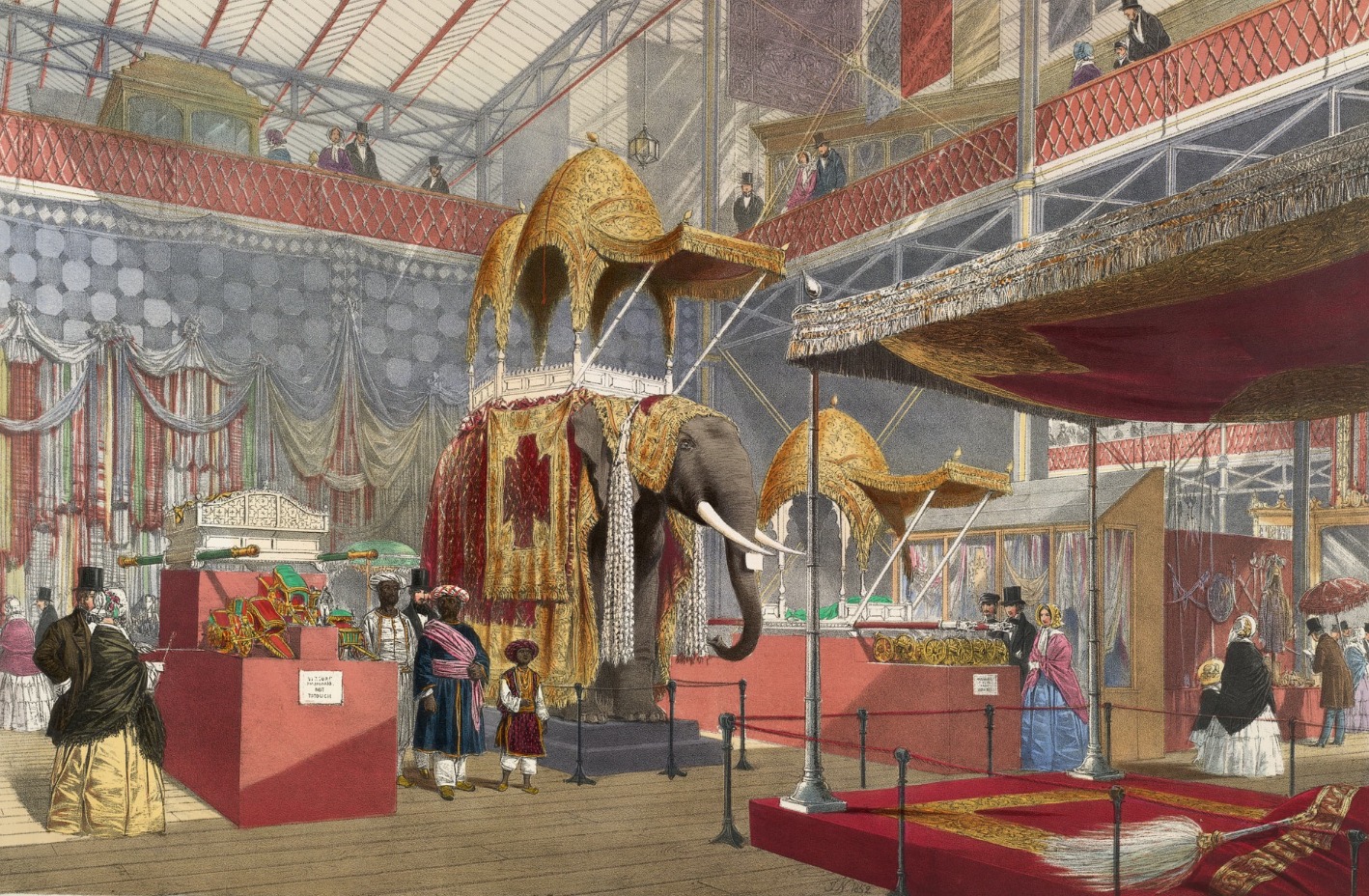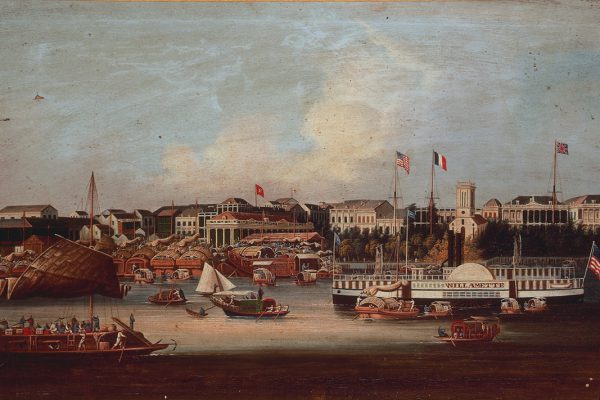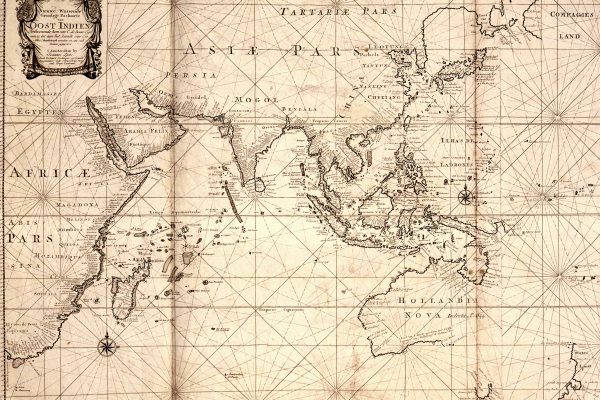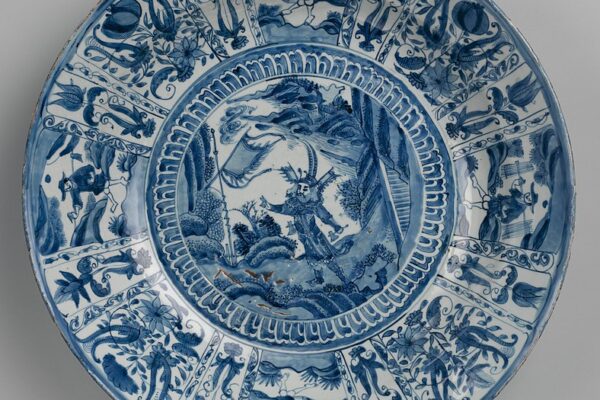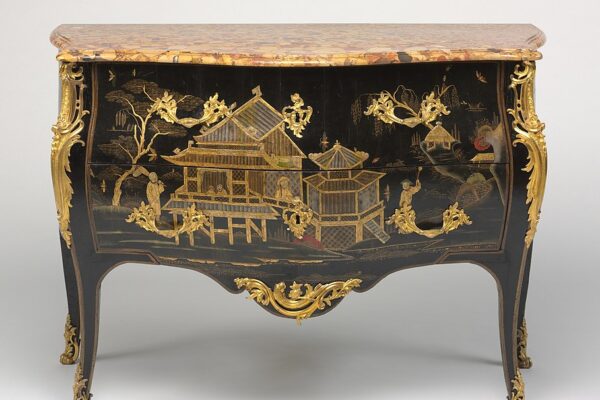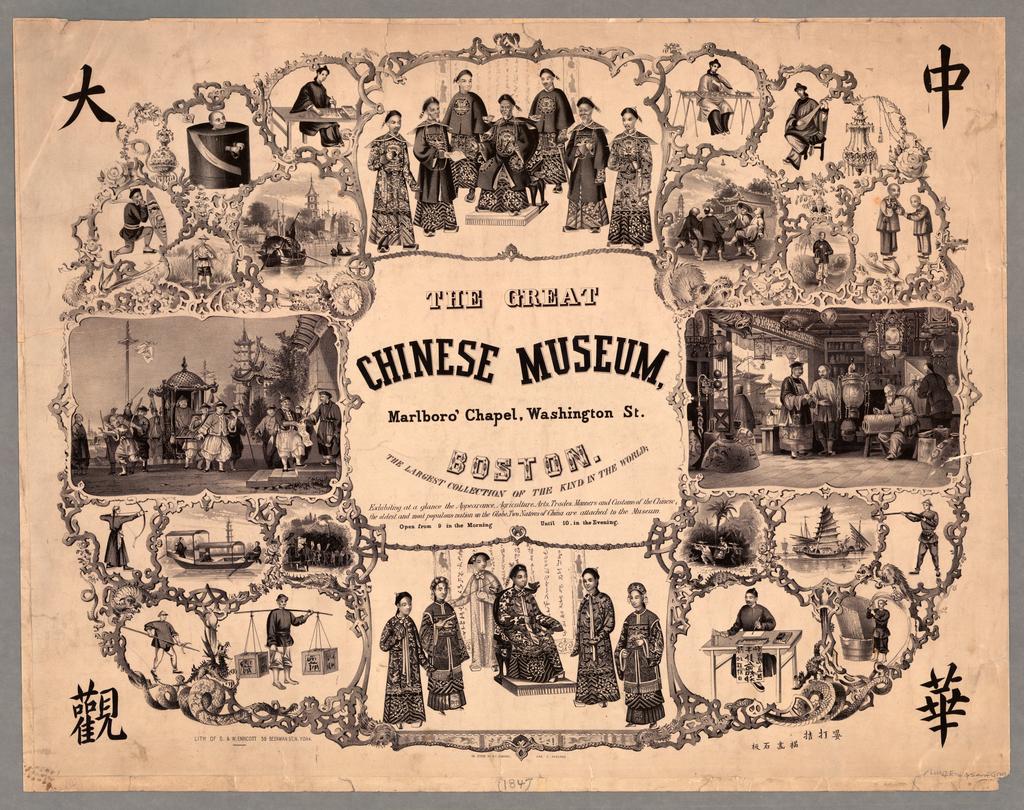All the World is Here!
Exhibitions, Expositions, and Cultural Interaction
The Stages of Asia’s Exposure to the West
The World’s Fairs and other international exhibitions provide a fascinating and flexible vehicle with which to explore the interaction between Asian cultures and the West. Exhibitions have always been a primary venue for learning about other cultures, and as we will see, fairs and other exhibitions allow us to explore multi-directional inspirations and influences, richly illustrated through many types of stunning media.
For the purpose of this exhibition, the early history of Western exposure to Asian cultures can be divided into three main stages: (1) The emergence of Asian trade with the West, sometimes referred to as the “Tea Trade,” in the 18th and 19th centuries; (2) the establishment of private museums to bring exotic (and profitable) exhibitions of Asian artifacts to mesmerized audiences in the US and Europe, and (3) true “world’s fairs” and other international exhibitions that included Asian countries. Examples drawn from these three stages can be examined in the following pages.
Stage 1
Trade Brings the West to Asia,
and Asia to Western Audiences
The American paddle steamer ‘Willamette’ at Canton (Guangzhou), China, ca. 1856. Oil on canvas on board.
Source: National Maritime Museum, Macpherson Collection, Royal Museums Greenwich RMG_BHC1776
The West Meets the “Exotic East”
As the trade with China, India, and the East Indies evolved in Europe and America during the late 18th and early 19th centuries, many Europeans and Americans held an idealized view of the “exotic East.” Few Westerners had actually seen these regions, and the lack of detailed and reliable accounts of these distant lands and their people led to a fascination for the exoticism of the Orient. This was both fueled and satisfied by fanciful views painted on Chinese export ceramics and other wares beginning in the late 18th century and then endlessly reinterpreted and mass-produced by European factories in a self-perpetuating cycle of cultural misinformation.
Export Wares
Examples of export ware produced for the Western market include scenes on porcelain (left) of willows, rolling lakeside hills, pagodas, and strolling scholars. This type of chinoiserie—a complicated mixture of Chinese, Japanese, Islamic, and various European styles— reinforced long-held perceptions of China and other parts of Asia, feeding the taste for the “exotic” in Europe and America.
View a Suggested Reading List for this StageStage 2
Early Private Museums Bring Asia to the West
“Commissioner Lin and the Destruction of the Opium in 1839.” Unknown Chinese artist.
Source: Hong Kong Museum of Art
Changing Perceptions
Events during the mid-19th century increasingly focused British and American public attention on China and began to change Western perceptions of China and of the Chinese. The First Opium War between Britain and China from 1839-1842 resulted primarily from efforts by the Chinese government to crack down on social and economic problems created by the use of opium, a commodity increasingly used by British traders to address its massive trade imbalance with China.
Early Exhibitions and Entrepreneurs
The late phases of the war itself were heavily reported in the newly-established Illustrated London News, depicting the enemy (as war reporting often does) as particularly savage and cruel, reinforcing negative views of China as a land of opium addicts, moral squalor, violence, and anarchy. The post-war years brought new trading treaties and opportunities for the US and England. Among a public increasingly conscious of and interested in details of Chinese society and economy after years of intensive coverage of China in the popular press, Chinese art and material culture began to be collected and appreciated on a scale not previously seen. This surging interest in Chinese art and material culture, both in Britain and in the US, resulted at least in part from a series of commercially successful public exhibitions opened by entrepreneurs to feed this growing appetite.
The Impact of Early Exhibits
These early museums of Chinese culture were important for a number of reasons:
- From the 1830s through 1850s, they presented a relatively honest and admiring image of China, illustrated with a comprehensive assortment of material objects and displayed before a huge and influential Western audience still unfamiliar with this distant land and culture.
- They “created a sensation,” as historian John Haddad would note, “because it produced an effect that no book or magazine could match: it actually seemed to transport visitors to China and return them home that same afternoon, in time for tea.”
- They fed the British interest in China following the First Opium War, presenting a more favorable view of that country than was provided by the press.
- However, they also conveyed to Westerners a sense of China as an unchanging culture, frozen in time, that could be understood through collections of objects that visually reminded the viewer of how different China was from Britain and the West. This approach would continue in the representation of Asian cultures in the early international exhibitions.
Stage 3
“The Greatest Exhibition the World Has Ever Seen”
Asia on Display at the World’s Fairs
World’s Columbian Exposition, Chicago 1893
Asia on Display at the World’s Fairs
The mid-19th century brought new Asian treaties and trade opportunities to the US and Europe, further raising awareness about Asia in the West. For example, with a public increasingly interested in details about Chinese society and economy after years of intensive Opium War coverage in the popular press, Chinese art and material culture began to be collected and appreciated on a scale not previously seen. This surging interest in Asian art and material culture, both in Europe and in the US, was further raised through a series of commercially successful public exhibitions to feed this growing appetite.
View a Suggested Reading List for this Stage

